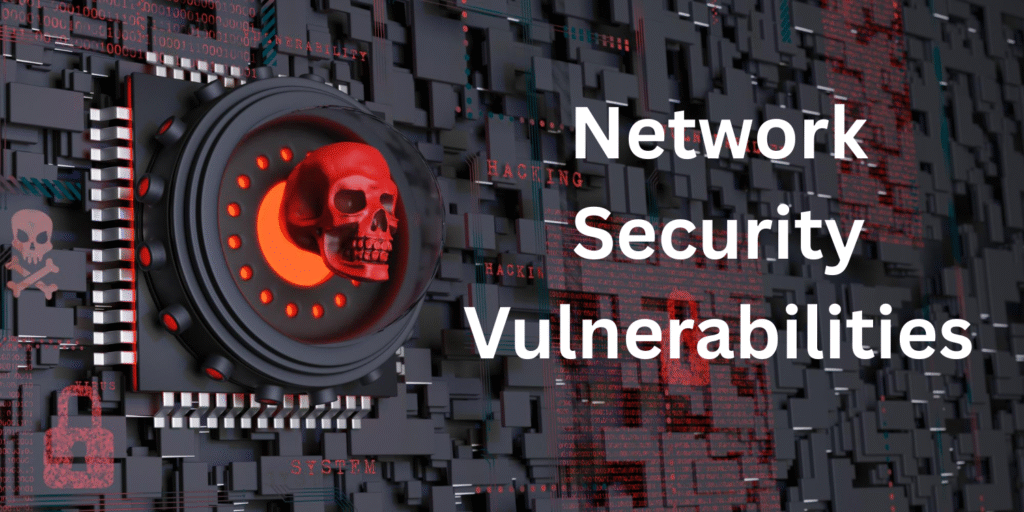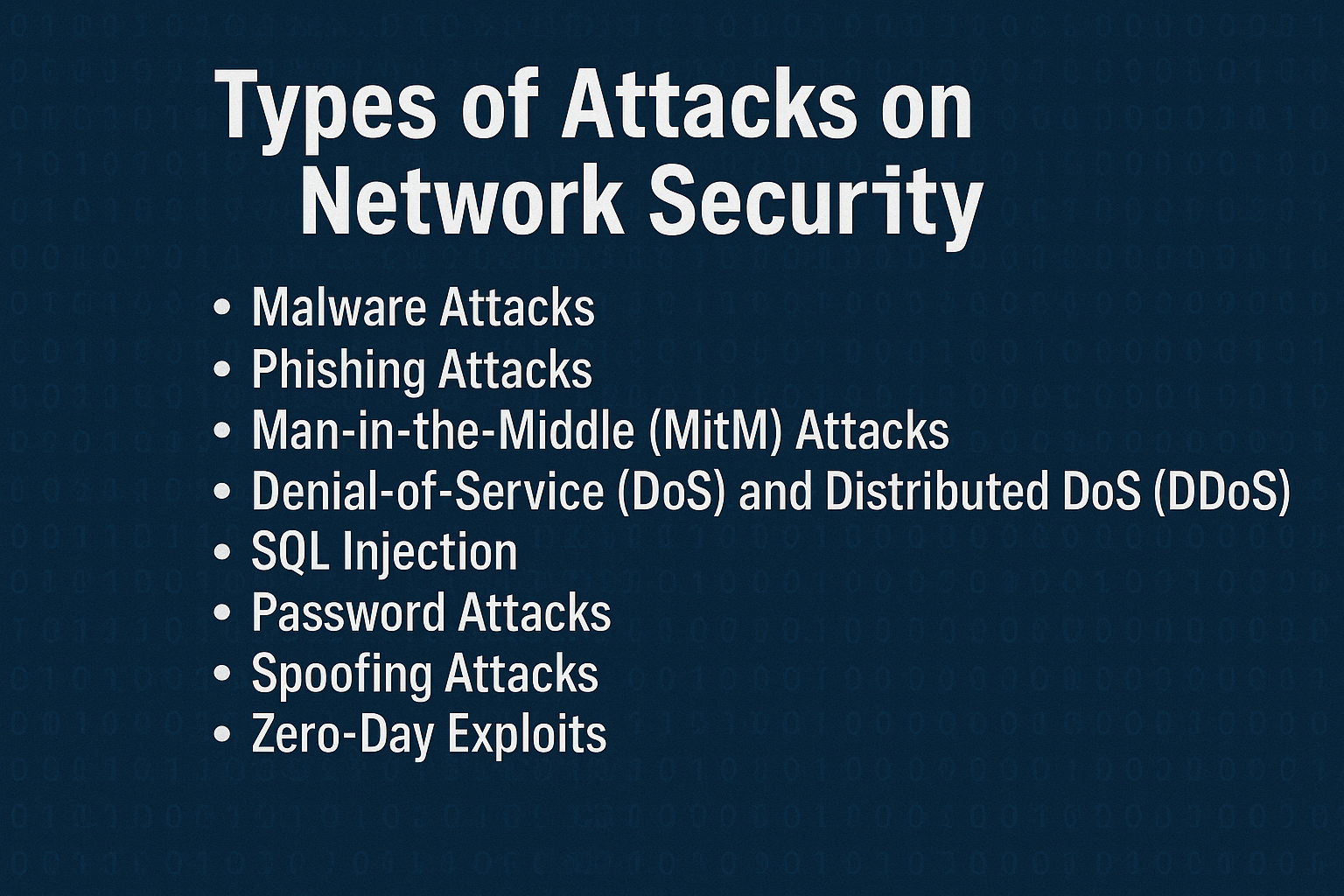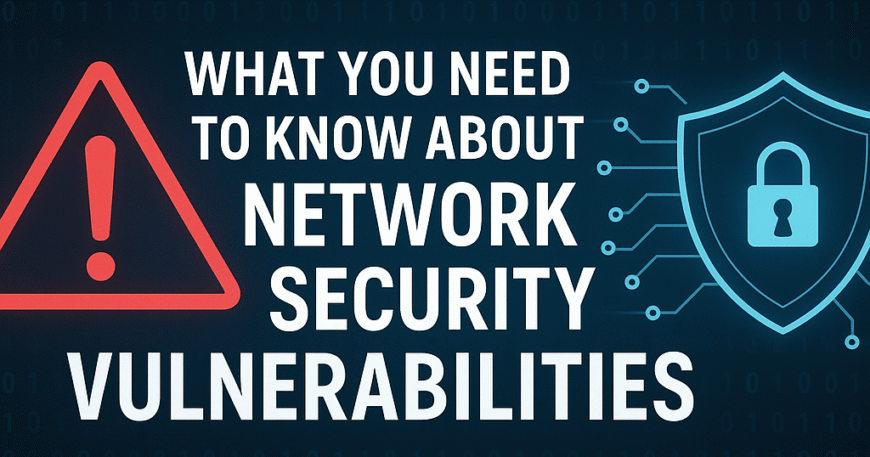Cyber vulnerabilities reached an all-time high in 2025, with over 30,000 disclosed flaws exposing organizations to relentless attacks. Since network security vulnerabilities refer to weaknesses in hardware, software, or policies, they act as gateways for cybercriminals to infiltrate systems and steal data.
The world is aggressively heading towards remote work and cloud adoption, which urges the need to prioritize secure networks. Therefore, this guide will unpack the risks, common vulnerabilities, attack types, and actionable strategies to fortify defences.
What Are Network Vulnerabilities?
Network vulnerabilities are flaws or gaps in a system’s infrastructure that attackers exploit to gain unauthorized access, disrupt services, or compromise data. These weaknesses can arise from outdated software, misconfigured devices, weak passwords, or insufficient encryption.

For example, unpatched systems like the MOVEit Transfer vulnerability (CVE-2024-5806) allowed attackers to exfiltrate millions of records in 2024. Understanding these vulnerabilities is the first step toward building resilient networks.
Why Is It Important to Consider Network Security Vulnerabilities?
Ignoring network vulnerabilities can lead to catastrophic consequences. Below are key reasons to prioritize their mitigation:
- Financial Losses: The average cost of a data breach reached 4.88 million in 2024.
- Regulatory Penalties: Non-compliance with standards like GDPR or HIPAA can result in fines up to 4% of global revenue.
- Reputational Damage: Publicized breaches erode customer trust, as 60% of small businesses fail within six months of a cyberattack.
- Operational Disruption: Attacks on critical infrastructure, such as energy grids or healthcare systems, can halt services and endanger lives.
Proactively addressing vulnerabilities safeguards not just data but organizational survival.
Read more: The Importance of Cybersecurity for Small Businesses
Types of Network Security Vulnerabilities and Threats
Modern networks face diverse vulnerabilities, each of which requires dedicated defenses. Here are some common network threats organizations are facing today:
1. Unpatched Software
Outdated systems lack critical security fixes, which allow attackers to exploit known flaws. Unaddressed vulnerabilities enable unauthorized access or data theft.
2. Misconfigured Cloud Services
Poorly configured access controls or APIs expose sensitive data to external threats. Similarly, overly permissive settings in cloud environments invite breaches.
3. Weak Authentication
Simple passwords or reused credentials simplify unauthorized access. Phishing or brute-force attacks exploit these weaknesses and gain unauthorized access.
4. IoT Device Risks
Insecure smart devices often lack built-in security and become entry points for botnets. These compromised IoT hardware devices can disrupt networks or launch attacks.
5. Insider Threats
There is also a possibility that employees may leak data or bypass security protocols. Similarly, Unintentional errors like misconfigured permissions also pose risks.
6. Legacy Systems
Older infrastructure often uses outdated encryption or unsupported software. These systems struggle to defend against modern attack methods.
7. Supply Chain Weaknesses
Third-party vendors with poor security practices create indirect vulnerabilities. So, the compromised software updates or hardware components can spread attacks.
Types of Attacks on Network Security
Network security attacks encompass various techniques that cybercriminals use to compromise networked systems. Below are some of the common types of attacks on network security:

1. Malware Attacks
Malware is malicious software, such as viruses, worms, trojans, ransomware, and spyware, that infects systems to steal, encrypt, or delete data. It can also hijack core computing functions to disrupt normal operations.
Modern malware often employs polymorphic techniques to evade detection and can spread laterally across a network once an initial host is compromised.
2. Phishing Attacks
Phishing involves deceptive messages sent via email or text. These messages are designed to trick recipients into revealing credentials or downloading malware by impersonating trusted entities.
These campaigns often use social engineering tactics, such as urgency or fear, to increase click-through rates and credential capture.
3. Man-in-the-Middle (MitM) Attacks
In a MitM attack, adversaries insert themselves between two communicating parties to eavesdrop or alter messages without detection. Attackers may exploit unsecured Wi-Fi networks or DNS spoofing to intercept traffic, then leverage stolen data or manipulate transactions.
4. Denial-of-Service (DoS) and Distributed DoS (DDoS)
DoS attacks flood a target system with excessive traffic or resource requests to render services unavailable to legitimate users. When orchestrated via botnets (networks of compromised devices), these become DDoS attacks and amplify the volume and complexity of the assault.
5. SQL Injection
SQL injection exploits vulnerabilities in web applications by injecting malicious SQL statements into input fields. This allows attackers to read, modify, or delete database contents. If the database runs with high privileges, it can even lead to data breaches, unauthorized access, and complete server compromise.
6. Password Attacks
Password attacks encompass brute-force, dictionary, credential-stuffing, and keylogging techniques aimed at guessing or capturing user passwords. Brute-force tools can try trillions of combinations per second, while credential stuffing leverages leaked username/password pairs from other breaches.
7. Spoofing Attacks
Spoofing involves falsifying identity information, such as IP addresses, ARP tables, or DNS records, to masquerade as a trusted entity and divert or intercept traffic. For example, IP spoofing can hide an attacker’s origin in packet headers, which facilitates stealthy attacks or amplifies DDoS traffic.
8. Zero-Day Exploits
Zero-day exploits target previously unknown vulnerabilities for which no patch yet exists. This gives defenders “zero days” to prepare once the flaw becomes public. Attackers often weaponize these flaws quickly, sometimes within hours of discovery.
9. Buffer Overflow Attacks
Buffer overflow exploits occur when programs write more data to a buffer than it can hold. This overwrites adjacent memory and allows execution of arbitrary code. Such vulnerabilities can lead to full system compromise, especially in services with elevated privileges.
Best Strategies to Mitigate Network Security Vulnerabilities
Network security vulnerabilities can be minimized if you follow a proactive approach. This involves proactive discovery, continuous monitoring, and layered defenses. Below, we have shortlisted the best strategies for network vulnerability management:

1. Asset Discovery & Continuous Vulnerability Scanning
Maintaining an up-to-date inventory of all devices, applications, and services on your network is the foundation of vulnerability management. Regular automated scans help identify new or unpatched systems before they become easy targets for attackers. Integrating these scans into a continuous process ensures that as your environment changes, you’re alerted immediately to any emerging risks.
2. Automated Patch Management & Timely Updates
Promptly applying security patches is critical because delays can leave known exploits unaddressed, which invite ransomware and zero-day attacks. Automating the patch lifecycle reduces human error and administrative overhead. Regularly reviewing patch schedules for all critical software, including operating systems and third-party applications, helps maintain compliance and bolsters defense-in-depth.
3. Deployment of Layered Security Controls
Firewalls, intrusion detection/prevention systems (IDS/IPS), and network access controls work together to filter and block malicious traffic while allowing legitimate communications to flow. Endpoint protection solutions, such as next-generation antivirus and application whitelisting, add an additional barrier against malware and unauthorized code execution. Aligning these controls with recognized frameworks (like NIST CSF, ISO 27001) ensures a coherent, auditable security posture.
4. Network Segmentation & Zero-Trust Architecture
Dividing the network into isolated segments limits an attacker’s lateral movement if they breach one zone. Adopting a zero-trust model, where no user or device is inherently trusted and access is granted on a per-session basis, minimizes the exposure of critical assets. Microsegmentation and strict policy enforcement make it far more difficult for threats to escalate privileges or spread undetected.
5. Strong Access Management & Multi-Factor Authentication
Enforcing least-privilege principles ensures users and services have only the permissions necessary to perform their tasks, which reduces the blast radius of compromised credentials. Implementing multi-factor authentication (MFA) adds a critical layer of defense against credential-based attacks, such as phishing and brute force. Complementing MFA with periodic access reviews and just-in-time privilege elevation further hardens your environment.
6. Continuous Monitoring & Threat Intelligence Integration
Real-time logging and security information and event management (SIEM) tools enable rapid detection of anomalies and potential intrusions. Feeding external threat intelligence, such as IP and URL reputation lists, into your monitoring systems sharpens their ability to distinguish legitimate activity from emerging attack patterns. Regularly tuning your alerts and dashboards prevents fatigue and ensures high-fidelity incident signals.
7. Endpoint Protection & Application Whitelisting
Deploying modern endpoint detection and response (EDR) platforms provides visibility into device-level behavior, which allows you to block or remediate suspicious processes quickly. Application whitelisting restricts execution to approved software, stopping unauthorized or malicious code from running, even if it bypasses perimeter defenses. Combining EDR with behavioral analytics helps detect zero-day exploits and fileless attacks that traditional antivirus may miss.
8. Employee Training & Security Awareness Programs
Human-focused strategies, such as regular phishing simulations and role-based security workshops, reduce the risk of social engineering and credential theft. Creating a culture where staff feel empowered to report suspicious activity without fear of reprisal leads to faster response times and incident containment. Well-structured awareness programs reinforce best practices and keep security top of mind as new threats emerge.
9. Incident Response Planning & Tabletop Exercises
Having a documented incident response (IR) plan ensures that roles, communication channels, and escalation paths are clear when a breach occurs. Conducting regular tabletop exercises and red-team drills tests your procedures under simulated pressure, which reveals gaps in coordination or tooling before real crises hit. Updating IR plans based on lessons learned and evolving threat landscapes keeps your response capabilities relevant and effective.
10. Regular Security Assessments & Penetration Testing
Engaging third-party security experts to perform vulnerability assessments and penetration tests provides an objective view of your defenses. These assessments should cover both external and internal perspectives, including cloud environments and remote work setups. Remediating findings promptly and validating fixes confirm that your security posture continually improves over time.
Wrapping Up
Network security vulnerabilities are a growing concern in 2025 and the years to come due to the expanding digital footprint. Organizations must prioritize proactive measures to mitigate risks. As cybercriminals innovate, staying ahead requires continuous adaptation, collaboration, and investment in cutting-edge technologies. Therefore, make it a core practice to understand vulnerabilities and implement robust defenses, as it can safeguard your assets and maintain stakeholder trust in an increasingly hostile digital world.
At Sun IT Solutions, we help businesses neutralize network security risks through proactive cybersecurity strategies and robust IT infrastructure management. Our services include vulnerability assessments, patch management, and Zero Trust Architecture implementation to address unpatched software, misconfigured systems, and weak authentication. We also secure cloud environments, deploy encryption protocols, and provide employee training to mitigate phishing and insider threats. Our managed IT services and 24/7 monitoring ensure your systems remain protected against evolving IT security risks.
Contact us today to fortify your defenses and transform vulnerabilities into strengths.




